Lead-Free Oxygen Sensors (O2 Sensors)
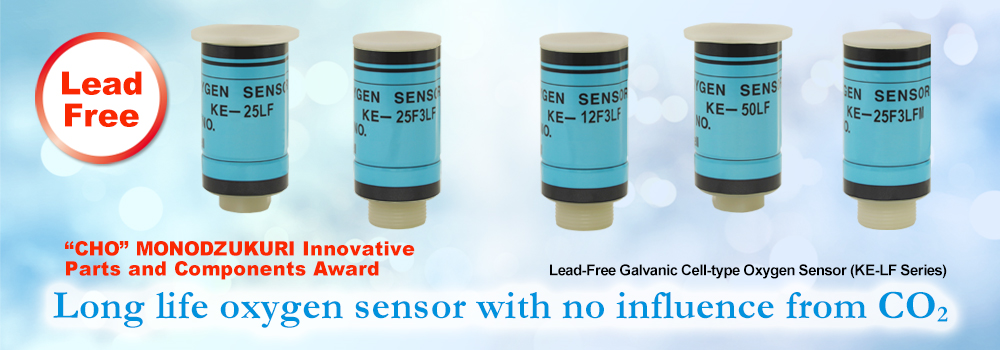
Overview
"Lead anodes in electrochemical oxygen sensors" have been listed as one of the exemptions of EU RoHS directive because there was no alternative technology at the time when EU RoHS directive(2011/65/EU) was issued. In April 2022, Final Report*1 on evaluation of exemptions for" lead anodes in electrochemical oxygen sensors" has been issued.
In the Final Report*1, consultants concluded that lead-free galvanic oxygen sensors have become viable alternatives for many applications such as medical devices, and implies that "lead anodes in electrochemical oxygen sensors" will not be listed as exemptions in the new direction except for certain medical devices and certain industrial use, which means lead-based oxygen sensors will no longer be used in many other applications in EU countries*2.
Maxell has been in sensor business for over 35 years after the development of KE series galvanic cell-type oxygen sensors with lead anodes in 1980s.
Responding to the needs for environmentally-friendly products, Maxell has productized KE-LF series lead-free galvanic cell-type oxygen sensor in November 2019, and has since expanded the series.
By adopting its originally developed weak acid electrolyte, all models of lead-free galvanic cell-type oxygen sensors features long life and virtually no influence from CO2.
Currently, the KE-LF series is adopted as an environmentally-friendly product for multiple use.
Maxell will discontinue sales of the leaded KE series and further promote switching to the lead-free KE-LF series to contribute to solving society's environmental issues.
- Final Report: European Commission, Directorate-General for Environment, Deubzer, O., Clemm, C., Rückschloss, J., et al., Study to assess requests for renewal of 16 exemptions to Annex IV of Directive 2011/65/EU : final report, Publications Office of the European Union,2022, https://data.europa.eu/doi/10.2779/248998
- lead-based oxygen sensors will no longer be used in many other applications in EU countries: As of August 2022. Maxell's perspective on the Final Report amended in August 2022
Topics
Jul. 19, 2024 Update Added new technical article "Overview of lead-free galvanic cell-type oxygen sensors"
Jun. 21, 2023 Notice Discontinuation of KE series leaded galvanic cell-type oxygen sensors
Apr. 13, 2021 News KE-25F3LFM (Lead-Free, Suitable for medical devices) Added to lineup
Jan. 20, 2021 News KE-12LF, KE-25LF, KE-50LF (Lead-Free Oxygen Sensors KE-LF Series) Added to lineup
Oct. 20, 2020 News Received "Health and Welfare, Biotechnology, and Medical Device Parts Award" at 2020 "CHO" MONODZUKURI Innovative Parts and Components Award. (Japanese website)
Please note that all information on this webpage including "News release", "Notice", technical document, catalog or leaflet is subject to change without notice.
Features
 Lead-free
Lead-free Weak acid electrolyte
Weak acid electrolyte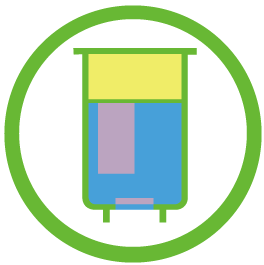 Galvanic-cell type
Galvanic-cell type Environmentally friendly, lead-free galvanic-cell type sensor
Environmentally friendly, lead-free galvanic-cell type sensor Virtually no influence from CO2
Virtually no influence from CO2 Long life (3 to 10 years)
Long life (3 to 10 years) Stable output voltage
Stable output voltage No external power supply is required for sensor operation
No external power supply is required for sensor operation Operates at room temperature
Operates at room temperature No warm-up time required
No warm-up time requiredApplications
Can be widely used in applications such as combustion gas monitoring, biotechnology equipment, food storage, education and medical devices.
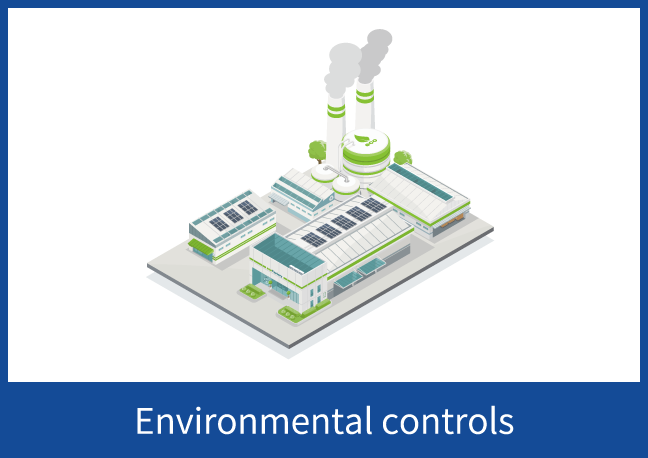
Environmental controls
Combustion gas monitoring
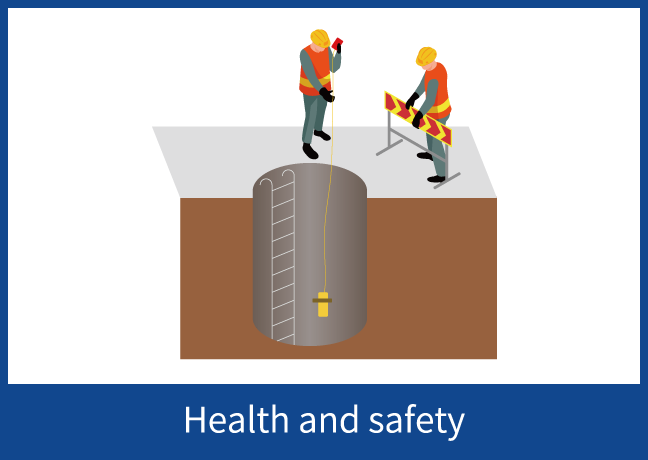
Health and safety
Air conditioning and oxygen deficiency monitoring systems / Oxygen concentration measuring devices (oxygen monitors)
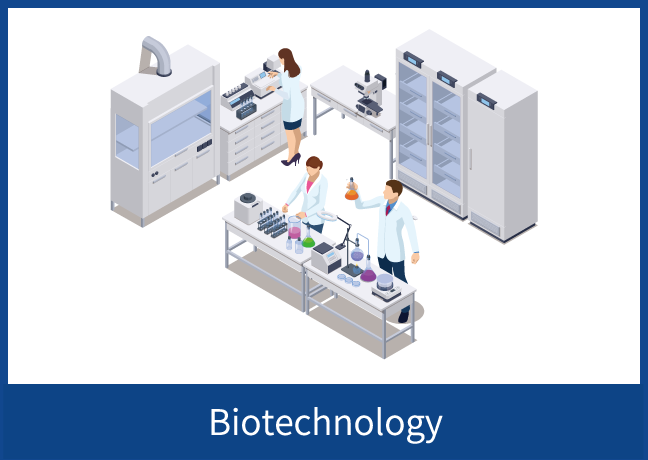
Biotechnology
Oxygen incubator / Anaerobic bacteria cultivator / Oxygen meter
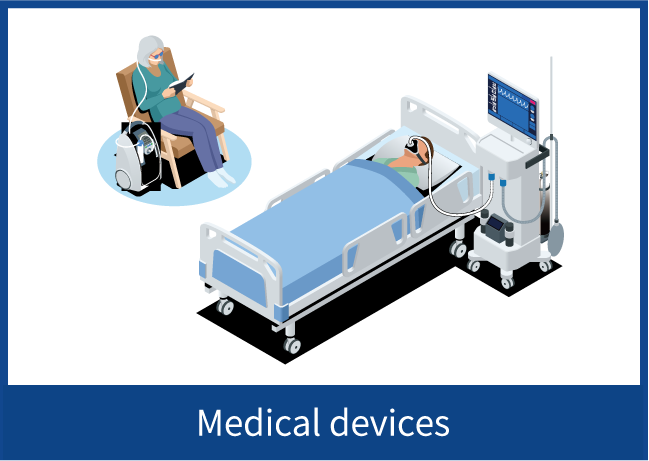
Medical devices
Artificial ventilator / Anesthesia apparatus / Oxygen concentrator / Infant incubator / Veterinary medical devices
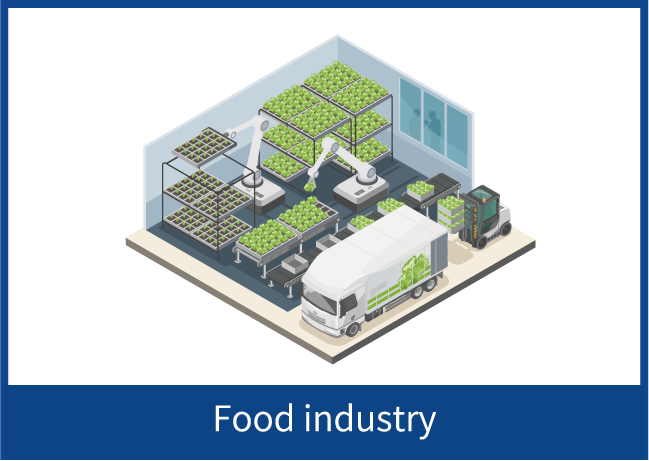
Food industry
Plant factories / Food storage units
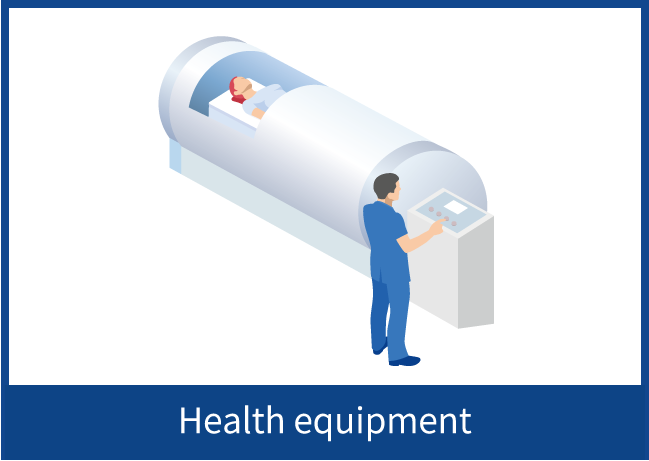
Health equipment
Oxygen capsule
Basic Structure of the Sensor
Measurement principle
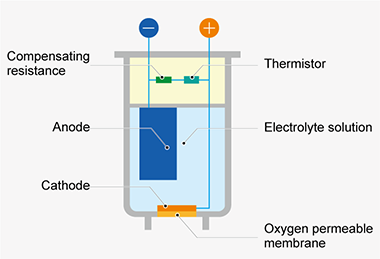
The galvanic cell-type oxygen sensor consists of a cathode, anode, electrolyte solution, and oxygen permeable membrane, similar to a metal-air battery. The sensor's oxygen permeable membrane is integrated with the cathode and greatly limits the amount of oxygen reaching the cathode.
In the oxygen sensor, the small amount of oxygen that permeates through the oxygen permeable membrane is reduced on the cathode, and the current generated between the cathode and the anode is converted to voltage by the compensating resistance built into the sensor.
Since there is a proportional relationship between the oxygen concentration (strictly speaking, oxygen partial pressure) of the atmospheric gas and the converted voltage, the oxygen concentration can be determined by measuring the voltage of the sensor.
Specifications of Lead-Free Galvanic Cell-type Oxygen Sensors 
| Model | KE-25LF/KE-25F3LF | KE-12F3LF | KE-50LF | KE-25F3LFM |
|---|---|---|---|---|
| Features | Standard product | Fast response time | Long life | Measurable up to 100% O2 |
| Measurement range | 0 ∼ 30% O2 | 0 ∼ 100% O2 | ||
| Initial output voltage | 10∼15.5mV | 9∼15mV | 4.5∼7.5mV | 5∼8mV |
| Accuracy (%Full Scale) |
± 1% | ± 1% | ± 2% | ± 1% |
| Operating pressure range | 811~1216 hPa | |||
| Operating temperature range | 5 ∼ 40℃ | |||
| 90% response time | Approx. 15 sec. | Approx. 8 sec. | Approx. 60 sec. | Approx. 15 sec. |
| Life expectancy ∗1 | Approx. 90×104 %h | Approx. 55×104 %h | Approx. 180×104 %h | Approx. 108×104 %h |
| Approx. 5 years | Approx. 3 years | Approx. 10 years | Approx. 6 years | |
- Life expectancy when the product is used at 20˚C with a humidity of 60%RH and atmospheric pressure of 1013hPa, represented as a value of (Oxygen Concentration %) × (Time h)
Notes:
1) Product specifications are subject to change without notice.
2) "Lead-Free" means lead content is less than or equal to 0.1wt% in each of parts (in a homogeneous material) comprising a product.
Dimensions
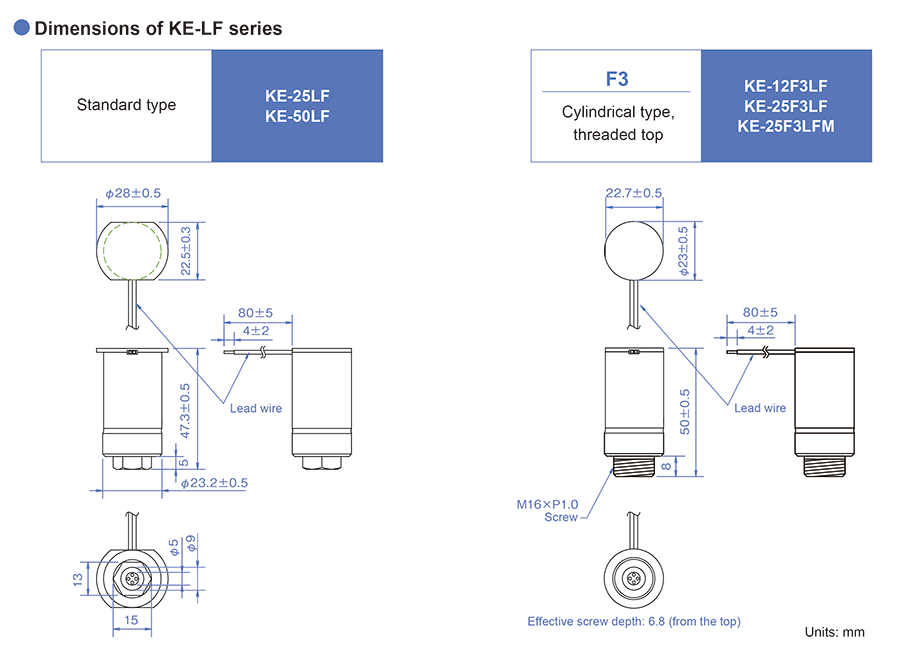
Note) All lead wire specifications are AWG-24 (Red: +Ve, Black: −Ve)
Model Selection Flow Chart
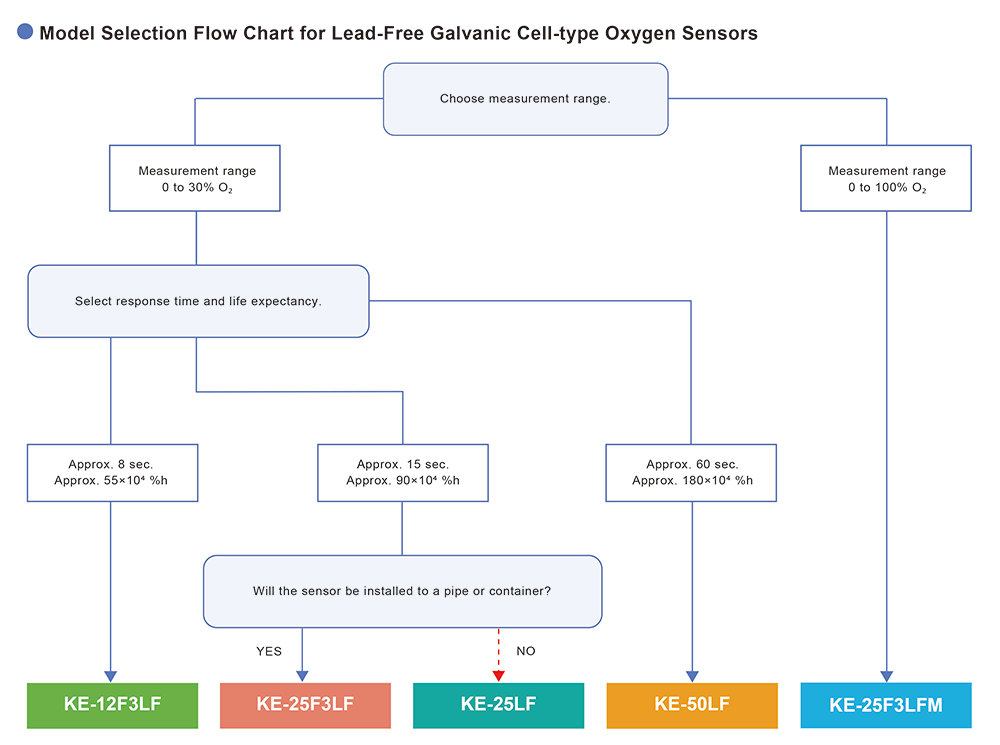
FAQ
Q1.Do you have lead-free oxygen sensors suitable for medical devices?
【A1】Medical devices such as artificial ventilator, anesthesia apparatus and infant incubator require high oxygen concentration measurement.
KE-25F3LFM is a lead-free galvanic cell-type oxygen sensor suitable for medical devices because it can measure over a range of 0 to 100 % oxygen.
Features of KE-25F3LFM
- Measuring range of 0 to 100% oxygen
- 20% longer life expectancy* than KE-25F3LF (6years)
* Life expectancy: when the product is used at 20°C with a humidity of 60%RH and atmospheric pressure of 1013hPa, represented as a value of (Oxygen Concentration %) × (Time h)
Q2.There are several types of KE-LF series, but what is the difference?
【A2】KE-LF sensors differ in life expectancy and response time as the table below.
| Model | KE-12F3LF | KE-25LF/KE-25F3LF | KE-25F3LFM | KE-50LF |
|---|---|---|---|---|
| 90% response time | Approx. 8 sec. | Approx. 15 sec. | Approx. 15 sec. | Approx. 60 sec. |
| Life expectancy | Approx. 3 years. | Approx. 5 years. | Approx. 6 years. | Approx. 10 years. |
Please check the details at Specifications of Lead-Free Galvanic Cell-type Oxygen Sensors
Q3.Do the oxygen sensors contain any substances banned by the European RoHS Directive?
【A3】In response to the growing need for RoHS Directive compliance, we have developed the KE-LF series, a lead-free oxygen sensor, as European RoHS2 Directive compliant product.
Q4.What is the tolerance range of the flow rate and pressure applied to the oxygen sensor?
【A4】Flow rate: 0.1 to 1 L/min Pressure: 811 hPa to 1216 hPa
However, if the flow rate or oxygen partial pressure changes with each measurement, the output will change even with the same oxygen gas concentration. For more accurate measurement, align the flow rate during calibration with the flow rate during measurement, and use the same pressure for each measurement.



